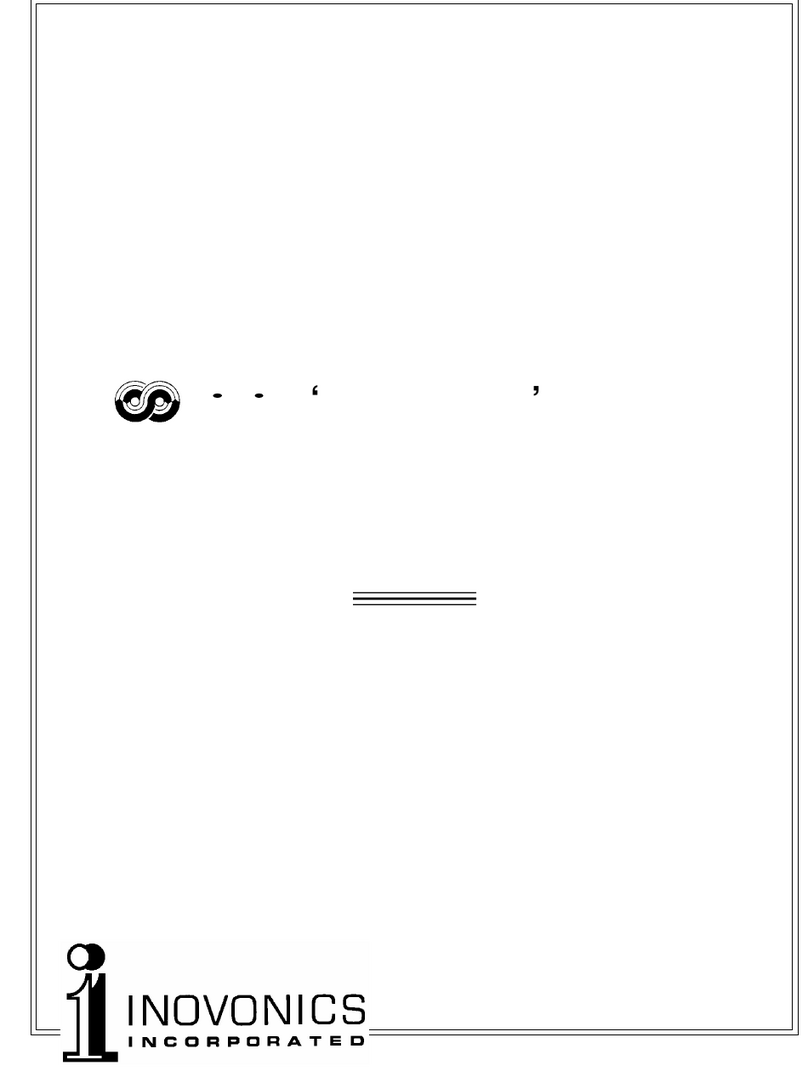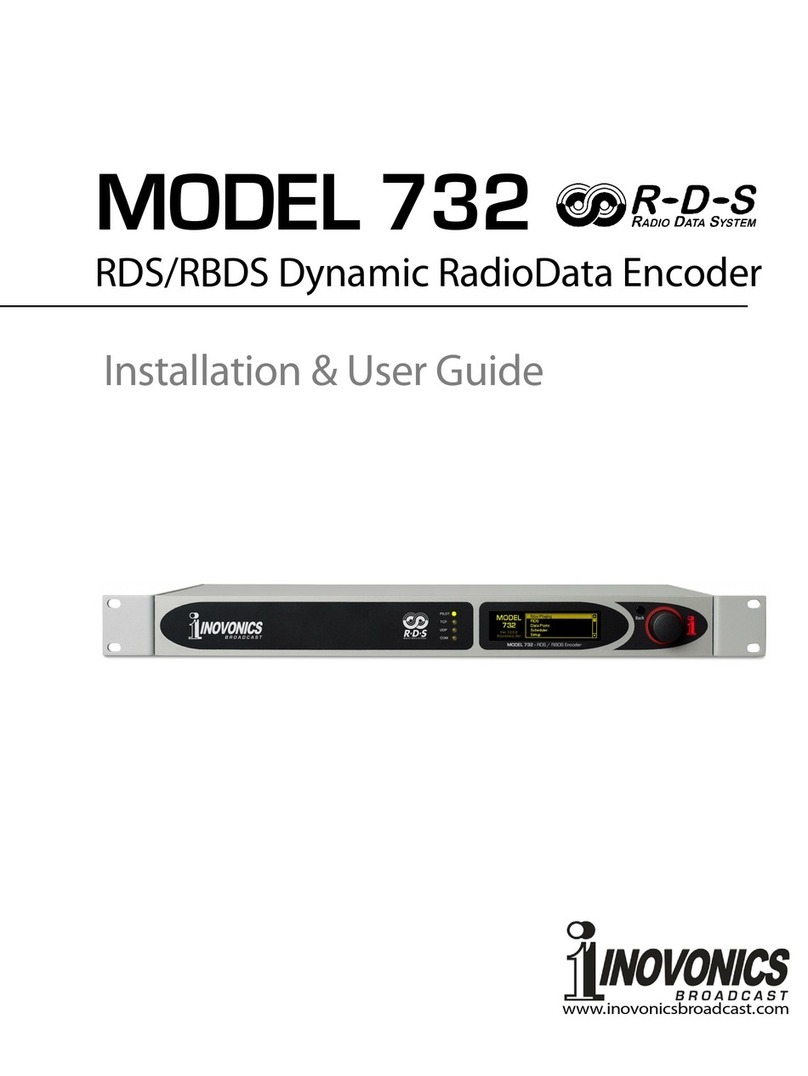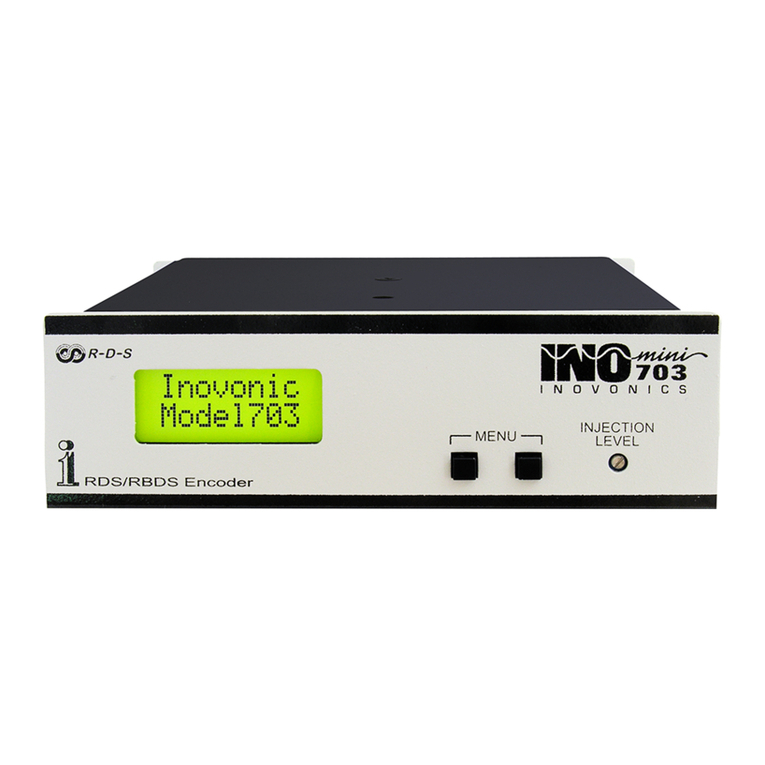T ABLE OF CONTENTS
S ection I -INT RODUCT ION
MODEL 510 PRODUCT DESCRIPTION
..................................................................... 3
T he “R adi o Data S ys t em” • R DS vs. R B DS • Features
MODEL 510 T E CHNICAL SPECIFICATIONS ............................................................. 4
S ection II -INS T ALLATION AND S E T UP
UNPACKING AND INS PE CT ION ................................................................................ 5
MOUNT ING ................................................................................................................. 5
R ack R equirement • Heat Dissipation
AC (MAI NS ) POWE R ................................................................................................... 6
Mains Voltage S el ector • Power Cord
RADIO F R E QU E NCY INT ERFERENCE (RFI) ............................................................. 6
L ocation • Ground L oops
FIRMWARE SELECTION ............................................................................................. 7
COMPOS IT E INPUT .................................................................................................... 7
INPUT LEVEL Control • Input Calibration
Composite S i gnal Selection
S OFT WARE INSTALLATION (optional) ...................................................................... 8
Installing the S of twar e • Cabling to the Computer
Running the S of twar e
S ection III -DECODER OPERATION
AN RDS OVERVIEW
..................................................................................................10
T he R DS System
R DS in E urope –R BDS in the U S
MODEL 510 FRONT -PANEL APPOINTMENTS ........................................................11
R DS Lock • T he L CD Screen and DIS P L AY S E L E CT Buttons
T he “Glossary” Utility
T HE RDS DATA GR OU P S .........................................................................................12
AF • CT • DI • E ON • E WS • IH • M/S
PI • PIN • P S • P T Y • T P • R T • T A
T DC • T MC • T P • Groups Displayed L is t
RUNNING T H E OPTIONAL SOFTWARE ..................................................................15
S tarting the S of twar e • Inovonics Warranty



































